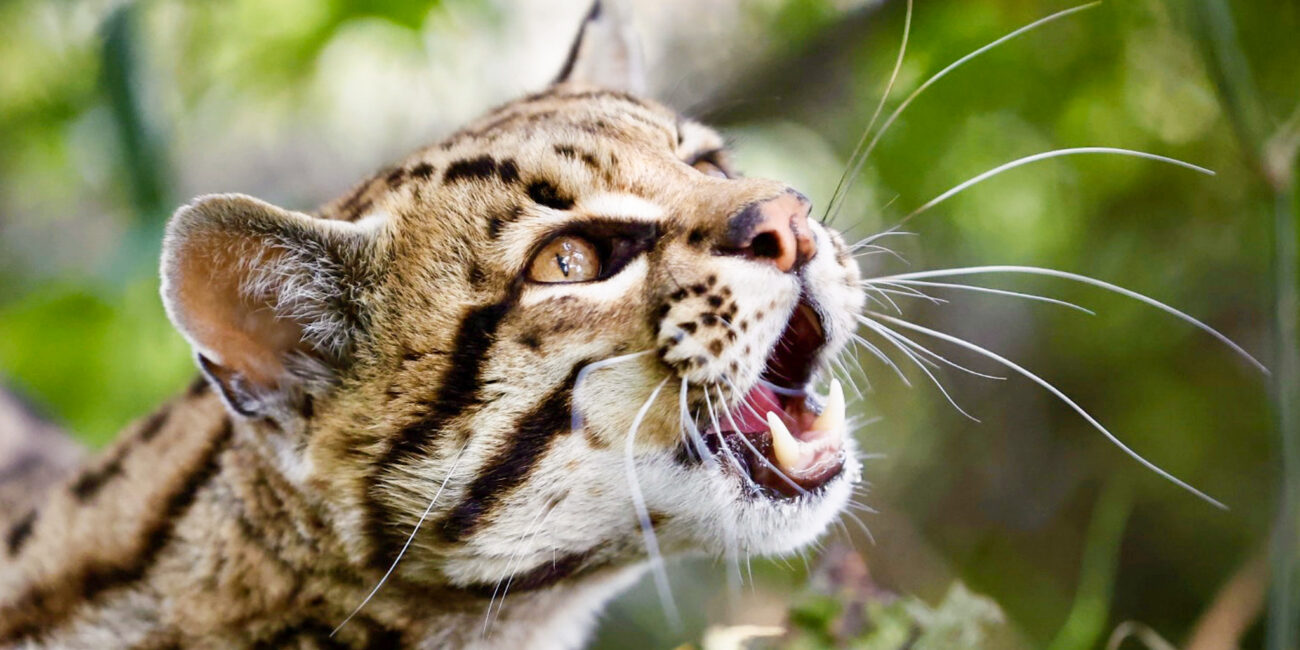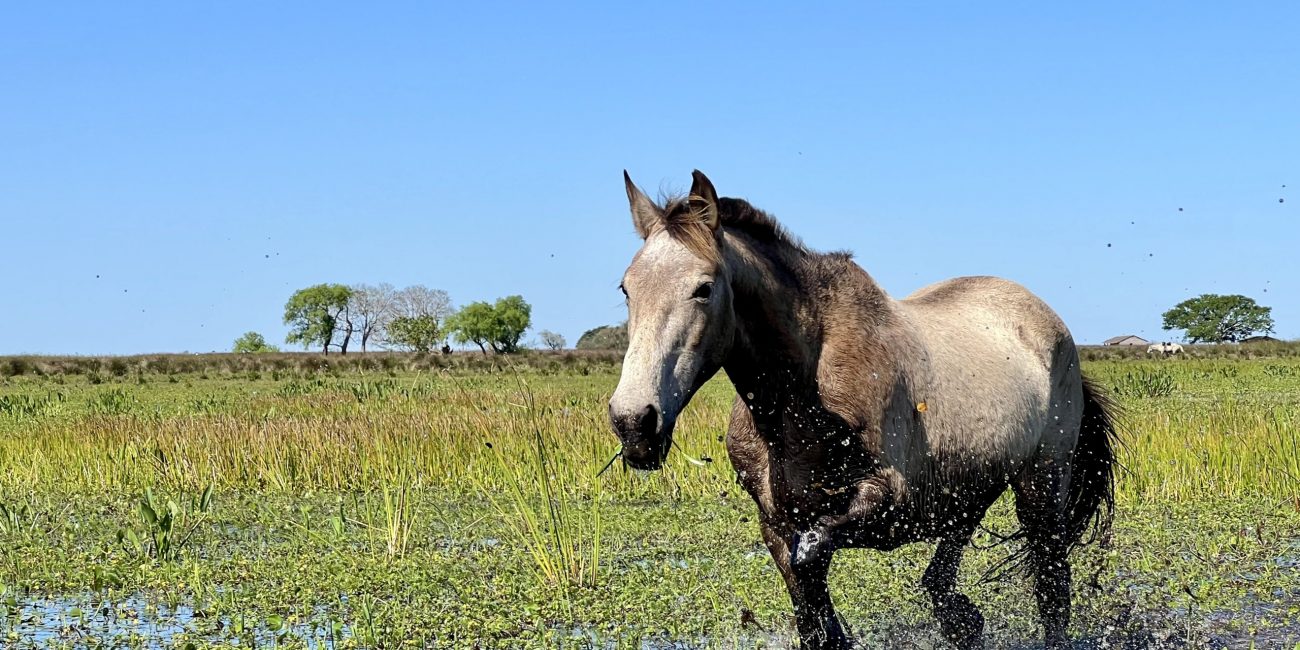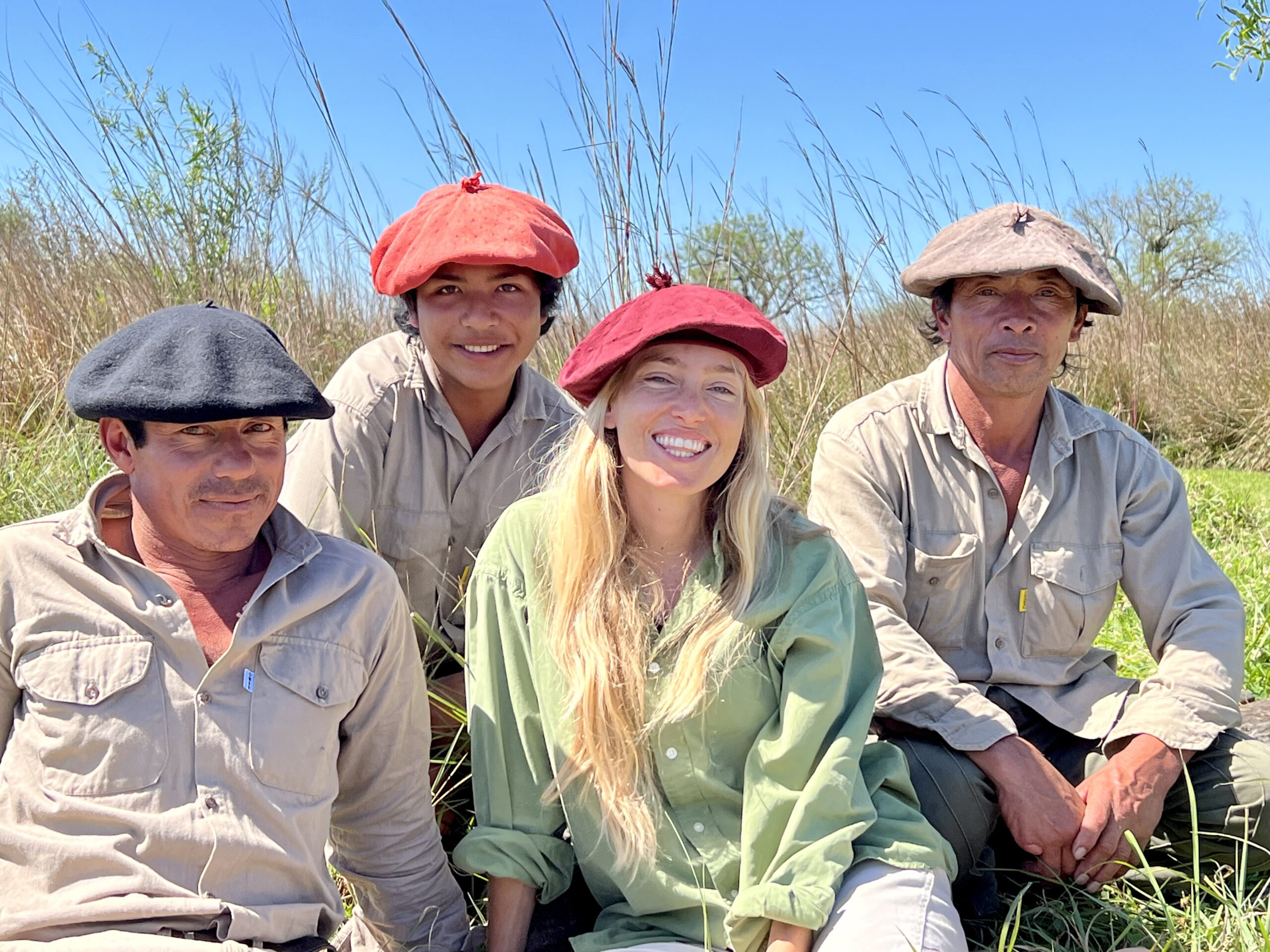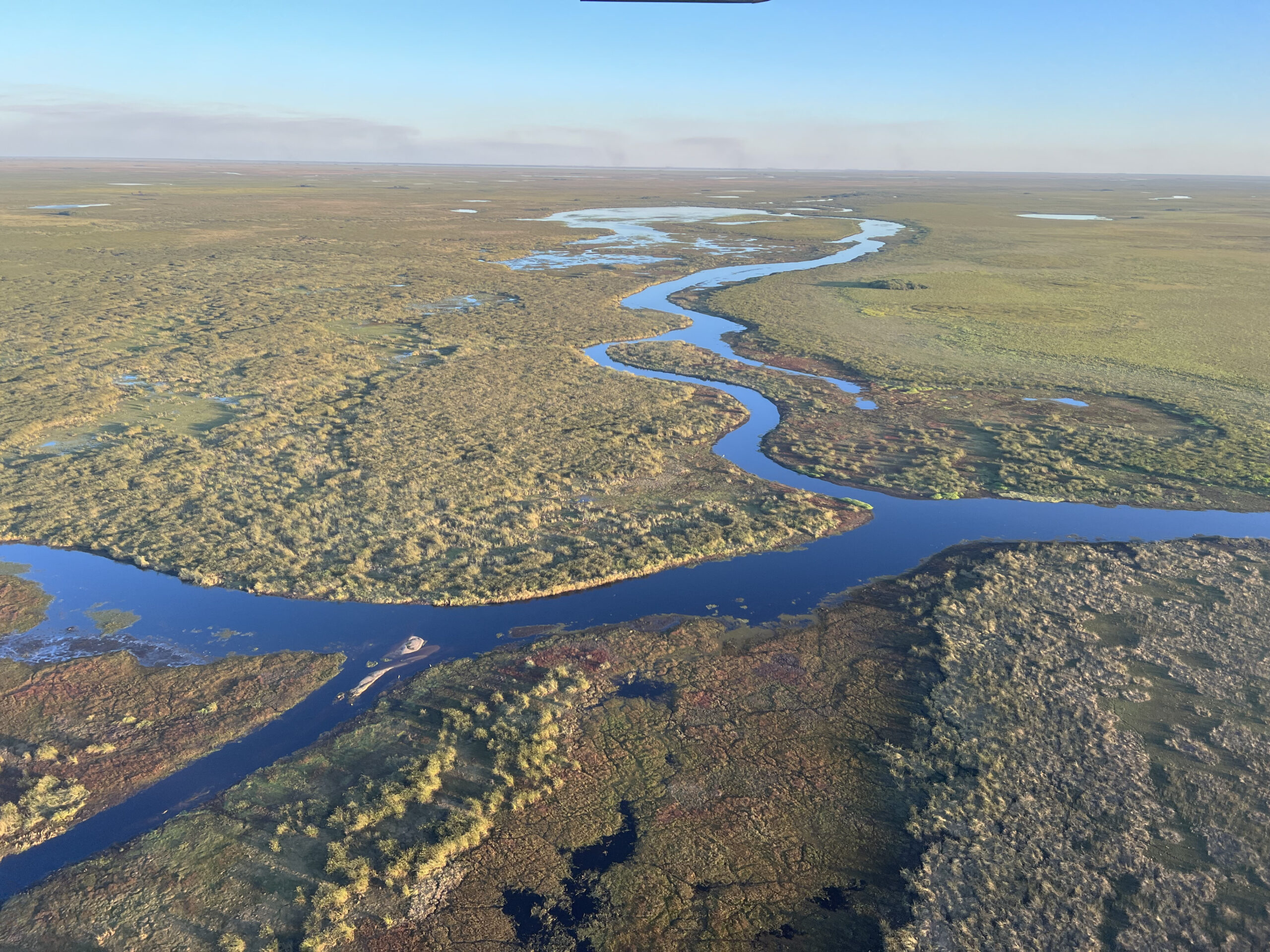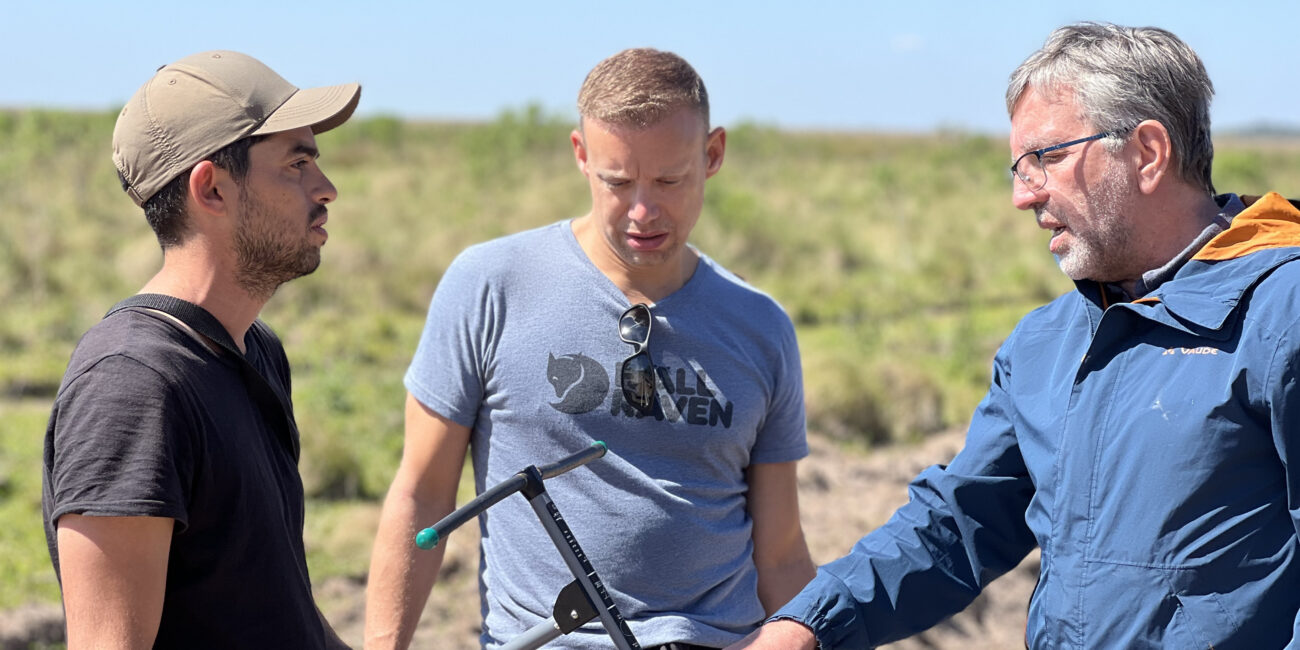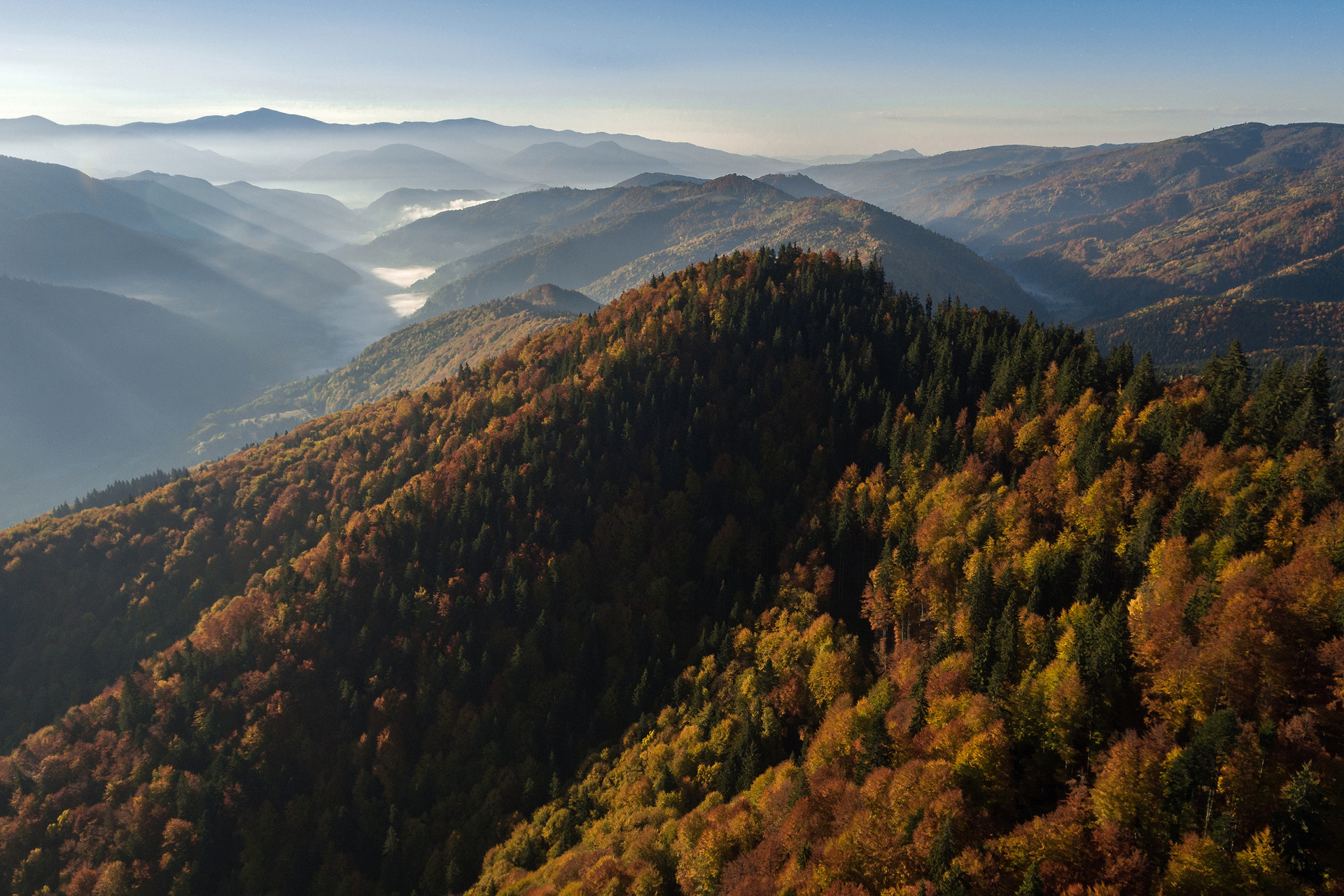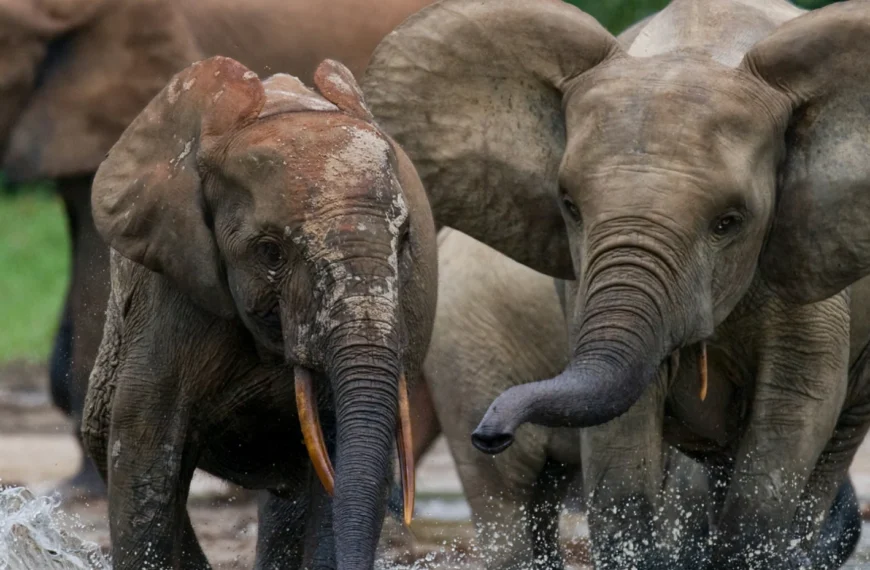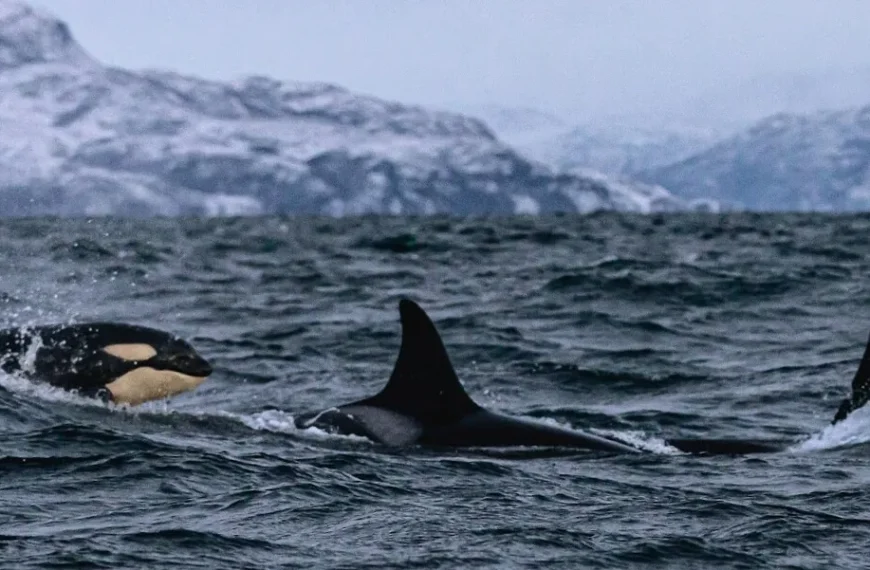Often called “the Argentine Pantanal,”…
I met several local characters throughout the trip. Ruben and Veda shared some tea and cake in their garden. Ruben told us about life in the forest, and how he works as a guide here. He’d recently joined a group of locals on a trip to Iberá and talked enthusiastically about what he saw and did. He hadn’t traveled that far away before. Veda demonstrated her knitting, and showed how she creates natural dye with local ingredients including maté leaves. They were both warm, funny characters, who welcome the new possibilities that Fundación Rewilding Argentina have opened up here.
I also met Juan, who gives horse rides through his part of the forest. He wore a coat fashioned from a cow’s hide. He was kind, gracious, and quiet—warming to his new role as host and guide. I also met Guade from Rewilding Argentina, who has lived in the area for several years slowly building relationships with local people. I think it’s really paid off.
Where did your journey take you and what were your most impactful experiences?
I was lucky enough to visit two Fundación Rewilding Argentina projects, in both El Impenetrable National Park in the north and Patagonia Azul in the south. It was fascinating to explore such different parts of the country: dense, unforgiving dry forest where jaguars and pumas roam and the windswept coastal steppe home of penguins and guanacos.
What both projects shared was a strong sense of purpose, a team of passionate, gregarious individuals, a focussed long-term strategy, and a clear idea of community-led development that benefits the local population as much as the animals and landscape.
Please tell us about the local characters you met along the way.
I met several local characters throughout the trip. Ruben and Veda shared some tea and cake in their garden. Ruben told us about life in the forest, and how he works as a guide here. He’d recently joined a group of locals on a trip to Iberá and talked enthusiastically about what he saw and did. He hadn’t traveled that far away before. Veda demonstrated her knitting, and showed how she creates natural dye with local ingredients including maté leaves. They were both warm, funny characters, who welcome the new possibilities that Fundación Rewilding Argentina have opened up here.
I also met Juan, who gives horse rides through his part of the forest. He wore a coat fashioned from a cow’s hide. He was kind, gracious, and quiet—warming to his new role as host and guide. I also met Guade from Rewilding Argentina, who has lived in the area for several years slowly building relationships with local people. I think it’s really paid off.
Which conversations during your journey made the biggest impression?
Several. I enjoyed my time with Marisi Lopez in El Impenetrable. She talked passionately about her work, her negotiations with local departments and relationships with local rangers, and the challenges and successes of the past few years. Among many other things over our several days together, she spoke about the importance of hiring locals and focussing on a smaller, more considered tourism model.
“The long path, not the short path. It takes more time. But it’s for forever”
I also got the opportunity to interview Sofía Heinonen, RA’s executive director, and to talk with conservation director Sebastian Di Martino. Both were full of insight I’ve used for my digital story and podcast from the trip.
Journeys With Purpose trips offer access to both organization leadership and those on the ground. You really come home with a deeper understanding of what’s happening there.
***
Journeys With Purpose trips offer access to both organization leadership and those on the ground. You really come home with a deeper understanding of what’s happening there.
What were your key takeaways and highlights from engaging with these conservation initiatives?
I found it eye opening and inspiring to see tourism being conceived from the ground up, a low-impact, considered model that prioritizes local people and long term goals.
I was also struck by the passion, perseverance, and optimism of everyone I met, from biologists to tourism coordinators. The headline figures (square kilometers protected, carbon sequestered, number of keystone species reintroduced etc) provide part of the story. But for the color, detail, and nuances of what’s involved, you need to see it firsthand and meet the people on the front lines.
How did engaging with the projects first-hand inspire your view of impact travel, and do you feel this is a trend we can expect to see grow for travellers in 2024?
I think the trend is only going to grow going forward. AFAR has always been concerned with impact travel, and many of our readers have a real interest in traveling consciously, sustainably, and joyfully. I’ve written and edited many stories on how travel can be a force for good, but this 9-day trip in Argentina was one of the first times I’ve really fully witnessed what it means first-hand. It helped me further understand the opportunities and challenges and brought it all to life. I came back inspired and encouraged and keen to support these projects—and similar work—worldwide.
Between 29th October – 6th October 2024, we will join Sofía Heinonen, Sebastian Di Martino, and the expert team of Fundación Rewilding Argentina to go behind the scenes of their legacy project in the Iberá wetlands.
DIG A LITTLE DEEPER
Contribute to Positive Impact on a Hosted Journey.
Connect with Impact Partners around the world during a Private Experience.
